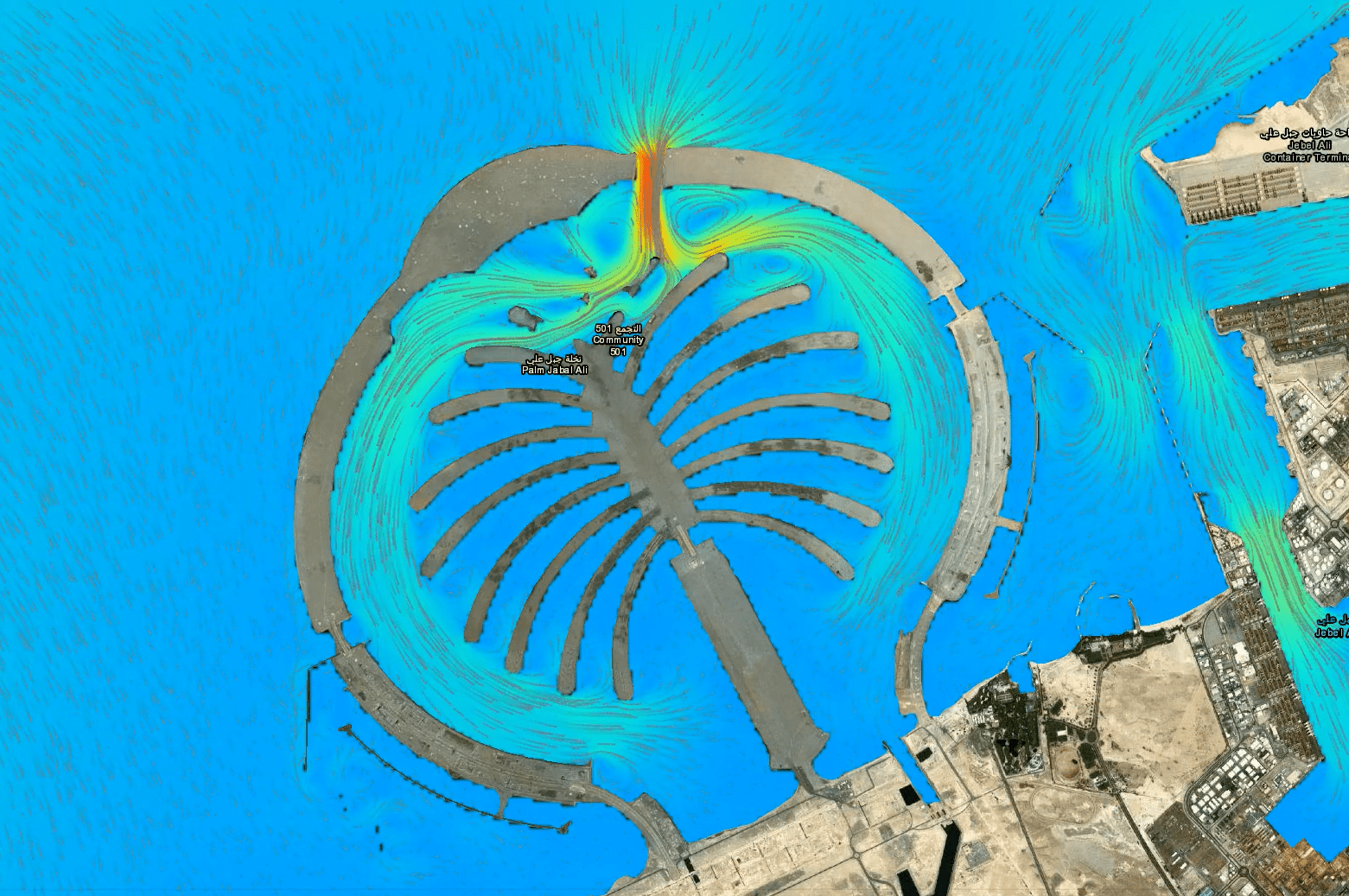Over the past three decades, the global energy landscape has undergone significant shifts: while renewables like solar and wind have witnessed rapid growth, coal-based energy production has faced a decline in many countries, especially in high-income nations, including those in the European Union. This transition could be attributed to heightened awareness of climate change driven by emissions, as well as growing concerns regarding the social and health-related impacts associated with fossil fuels.
A 2022 survey by Statkraft, spanning nine European countries and involving over 18,000 respondents, aimed to understand public attitudes toward renewable energy. The findings were clear: 80% of participants showed acceptance of onshore wind projects in their communities. Moreover, three-quarters expressed the belief that their country should have begun investing in renewables “a long time ago” and two-thirds advocated for prioritizing further expansion of renewable energy sources.
Despite this momentum towards renewable energy adoption, new projects, particularly the installation of solar and wind power plants, have been running into public resistance. This opposition to renewable energy projects is often encapsulated in the “Not in My Backyard” (NIMBY) concept, which refers to the reluctance of local communities to accept infrastructure developments in their vicinity, even if they acknowledge the broader benefits of renewable energy.
The reluctance towards renewable energy projects can stem from a variety of concerns, including their visual impact, particularly when it comes to the installation of wind turbines near residential areas. Residents fear that renewable infrastructure may disrupt the scenery and, in turn, impact the value of their property.
However, “residents may overestimate these negative effects,” says CMCC researcher Wei Guo. In a paper published in the journal Proceedings of the National Academy of Sciences (PNAS), Guo – together with scientists from the Potsdam Institute for Climate Impact Research (PIK) and the University of California, Berkeley – provides a comprehensive analysis of this issue, emphasizing its significance in evaluating the trade-offs between the benefits and costs of renewable energy. “As we show in our paper, their actual impact is usually minimal,” says Guo.
In the following interview, Guo delves into the complexities of renewable power implementation, shedding light on its economic implications and the role of scientific research in shaping policies. From overcoming historical challenges to exploring future innovations, we navigate through global variations in the adoption of renewable energy and the imperative of ensuring an equitable and sustainable transition.
What is the economic impact of implementing renewable power?
The economic impact of renewable energy, like wind or solar power, is quite a complex issue as it spans different scopes. It can be examined at a macro level—regional or national—or at a micro level, involving individual or small-scale developments.
At the macro level, the introduction of renewable energy projects usually brings several economic benefits. For instance, developing a new wind farm in a region leads to new investments and job creation. As people secure jobs and earn incomes, their increased purchasing power can stimulate the local economy. This can result in higher property values and attract businesses like shopping malls and restaurants, transforming the area into a vibrant city hub. Additionally, the local governments could benefit from higher tax revenues, enabling better public services such as schools and transportation, and possibly offering tax credits to other industries.
On the other hand, at the micro level, decisions about whether individuals or developers should invest in renewable energy projects like rooftop solar panels or wind farms come into play. Historically, the high upfront costs of wind power made it less cost-competitive compared to fossil fuels. Consequently, the electricity generated from wind was more expensive than that from coal, necessitating government subsidies to encourage investment in wind farms. However, technological advancements have significantly reduced both the upfront and maintenance costs of wind and solar power, making them generally competitive with fossil fuels today. Although the issue of high initial costs was significant in the past, recent developments have alleviated this barrier, reducing the need for government subsidies to promote renewable energy adoption.
What role do scientists and their research results play in shaping renewable energy policies?
Regarding the development of renewable power, there is increasing concern about the potential negative impacts of their construction. One key aspect is their visual impact, as highlighted in a paper I recently published on PNAS, together with colleagues from PIK and Berkeley, on “The visual effect of wind turbines on property values is small and diminishing in space and time”. Wind turbines are tall and often considered unattractive. If they’re built close to residential areas, they can spoil scenic views and potentially decrease property values. Local residents also raise concerns about noise from wind turbines and flickering from solar panels, which can be very bright and cause disturbances.
These concerns often lead to strong opposition from local communities when new renewable power projects are proposed. To address this, governments usually implement public engagement processes, such as public hearings. These hearings involve local residents and scientists to discuss the environmental benefits and potential costs of the project.
In this context, scientists play a crucial role. They are key stakeholders in these hearings, providing necessary scientific expertise. Additionally, scientists help inform local residents about the actual impacts of the projects. Often, residents overestimate the negative effects, fearing that infrastructure several kilometers away could significantly harm their living environment. As we show in our paper, their actual impact is usually minimal. Therefore, scientists are essential in accurately communicating these findings to help residents understand the true costs and benefits of renewable energy projects.
You mentioned that historically there were significant challenges at the micro-level. Have you noticed any evolution in this regard nowadays? What is changing?
I can share some insights from my personal experiences. I grew up in Beijing, China, and in 2015, about eight years ago, I visited a wind farm in central China. China has substantial wind resources, and around 2010, several new wind farms were developed. By 2015, the government was offering subsidies to boost growth, and I had the opportunity to speak with developers. They mentioned that the technology at that time was relatively outdated, making the cost of wind power generation much higher compared to coal-fired electricity. Consequently, they heavily relied on government subsidies to build wind farms.
Fast forward to last year, I visited them again and found a significant change. They said that now their costs are comparable to coal-fired electricity, thanks to reductions in upfront and maintenance costs driven by technological advancements. Over the past decade, there has been significant progress in green technology, which has reduced the costs of constructing renewable power facilities, making them competitive with traditional fossil fuels.
Looking ahead, I believe this trend will continue. Wind and solar energy are inherently free; the main expenses come from the infrastructure and maintenance. With ongoing technological advancements, these costs will likely decrease further, making renewable power increasingly cost-effective compared to coal and other fossil fuels.
How can innovation and technology help address challenges and impact future developments in this field?
The efficiency of wind power generation hinges on how effectively we can harness wind energy. Historically, our ability to install tall wind turbines with large blades was limited to flat areas, rather than elevated terrain like hills. This limitation hampered efficiency. However, technological advancements have allowed us to manufacture increasingly larger wind turbines and blades, and we can now install them on elevated sites, which significantly boosts efficiency.
Moreover, noise pollution from fast-spinning wind blades was a concern, prompting developers to place turbines far from residential areas, necessitating costly grid connections. However, recent technological breakthroughs have mitigated noise levels, enabling the installation of tall turbines closer to urban centers and existing grids. These advancements not only reduce wind power generation costs but also cut expenses related to grid maintenance and expansion, and therefore hold immense promise for the future of renewable energy.
Do you observe variations across different regions of the world in the adoption of renewable energy?
The differences in technology across regions have become less significant due to trade and the mobility of skilled workers and scientists. However, varying attitudes towards the public acceptance of renewable energy remain a significant issue globally.
In the United States, for instance, public opposition to new wind power developments can arise even in offshore locations due to concerns about impacts on tourism and marine life. Conversely, European countries generally exhibit higher reliance on and acceptance of renewable energy, with some Nordic nations and Iceland relying on renewables for over 50% of their energy needs. Italy also demonstrates significant renewable energy usage, with approximately 40-50% of energy sourced from renewables. In contrast, renewable energy accounts for less than 20% of total energy generation in the US, with wind and solar contributing less than 12% and 8%, respectively. Overall, Europe tends to show greater attention and acceptance towards renewable energy construction compared to the US.
What factors contribute to these varying perceptions, particularly when it comes to the differences between the United States and Europe?
I believe that overall, European citizens exhibit a higher level of acceptance and concern regarding climate issues compared to those in the United States. According to our research, individuals from different income levels and political affiliations tend to have varying perspectives on climate issues. Generally, members of the Democratic Party and individuals with higher incomes show greater focus on climate concerns and are more accepting of renewable energy sources. This correlation between income status and attitudes toward climate issues is significant.
Additionally, I speculate that the potential impacts of climate change, such as sea-level rise, may be more imminent and severe in Europe compared to the United States. While the US does experience climate-related events like hurricanes, historically, there have been fewer such disasters. Moreover, many inland states in the US are geographically distant from coastlines and may not directly experience the effects of climate change. This geographical disparity could contribute to differences in attitudes toward renewables and climate change.
What about issues regarding the adoption of renewable energy in developing nations?
I believe it is considerably more challenging for developing economies to transition to renewables due to the associated costs. Firstly, it often depends on the availability of resources. Only a handful of large nations, such as China and Russia, possess abundant wind or solar power resources suitable for renewable energy development. This poses an initial obstacle. Numerous small developing nations do not possess sufficient natural resources to support the development of renewable energy. Secondly, the financial aspect plays a significant role. Just a decade ago, even in a country as sizable as China, renewable energy development was not economically viable compared to coal. Only recently has the cost of wind and solar power become comparable to that of coal. Building wind and solar projects demands significant upfront investment, and it often takes decades for developers to recoup these costs and achieve financial gains. Consequently, many developing nations still require subsidies to invest in renewable projects initially, until they become cost-competitive with coal. I anticipate that over the next decade, as the costs of wind and solar energy continue to decrease, it will become more financially feasible for large countries with ample renewable resources like China to expand their renewable energy capacity.
What steps are necessary to ensure that the transition to renewable energy is equitable and sustainable for everyone? How can we achieve a just transition?
Climate change and climate adaptation inherently involve equity challenges because the damage from climate change is global, but only wealthy individuals and nations have the resources to pay for adaptation strategies. However, renewable energy technology could be a viable solution for many developing countries, especially those with abundant renewable resources.
If we continue to advance technology and reduce the costs of building and maintaining renewable energy projects, renewable energy will become a more equitable adaptation tool, particularly for developing nations. Solar and wind power are essentially free once harnessed, and using them could be highly beneficial for developing countries. This kind of technological investment benefits the entire globe, not just the developed world. Therefore, the adoption of renewable energy is a very effective way to achieve a just transition and ensure equity in climate adaptation efforts.
Where do you think we are headed in terms of renewable energy? Are you optimistic about the future, and what developments do you foresee?
I am generally optimistic about the adoption of renewable energy and our improving understanding of its overall costs and benefits. Firstly, regarding technological advancements, both engineers and scientists are now better equipped to reduce the costs associated with renewable energy generation and understand the distribution of renewable resources. These factors enable developers to identify optimal locations and technologies for renewable energy projects, and I expect that continued technological investment will further reduce costs in the future.
Additionally, from an academic perspective, there is a growing number of researchers focused on studying the true benefits and costs of renewable energy generation. More researchers are examining how renewable power projects impact local communities and ecosystems. As we gain a more comprehensive understanding of these aspects, the profitability and viability of renewable energy will likely increase. Therefore, I would say that I am very optimistic about the future development of renewable energy, driven by technological advancements and academic research efforts.
 Wei Guo is a researcher at CMCC and a post-doc scholar at the European Institute on Economics and the Environment – EIEE. Her research is situated at the intersection of Climate and Environmental Economics with Urban Economics, with a focus on topics including climate adaptation, natural disaster, renewable energy, and digital innovation.
Wei Guo is a researcher at CMCC and a post-doc scholar at the European Institute on Economics and the Environment – EIEE. Her research is situated at the intersection of Climate and Environmental Economics with Urban Economics, with a focus on topics including climate adaptation, natural disaster, renewable energy, and digital innovation.
Guo holds a PhD in Agricultural and Resource Economics from University of California at Berkeley. Prior to doctoral study, she earned a Master’s degree in Economics from Peking University, and double Bachelor’s degrees in Mathematics and Economics from the same institution.







